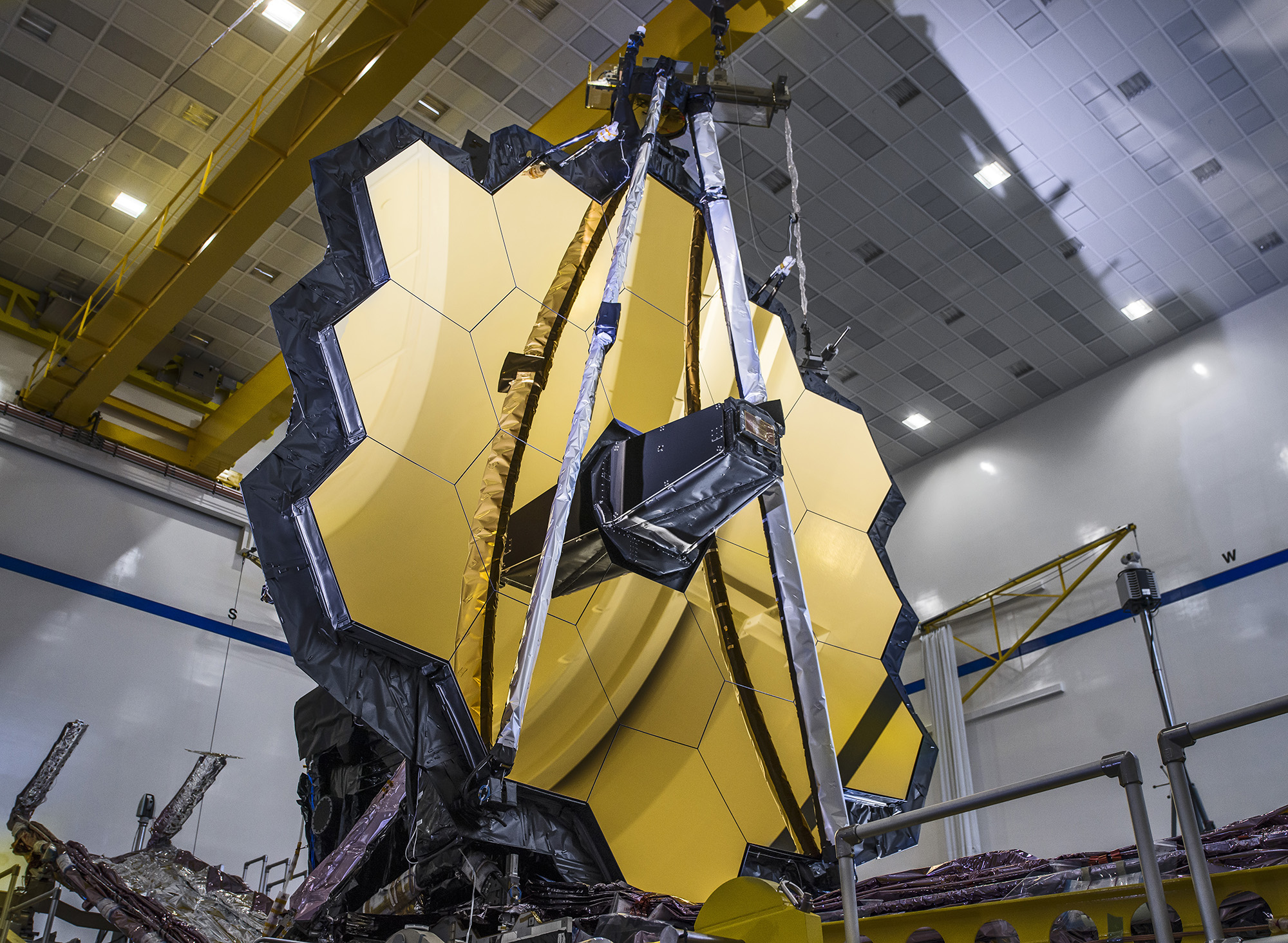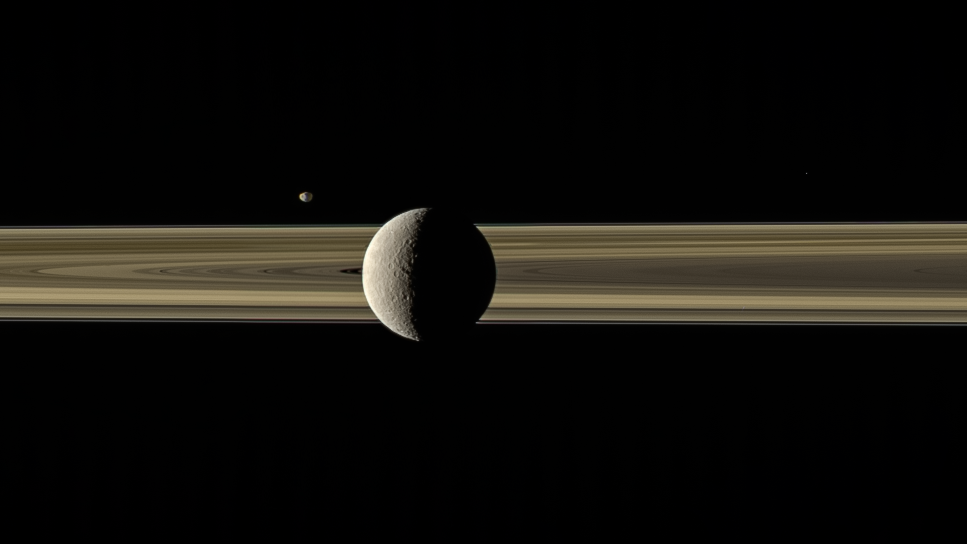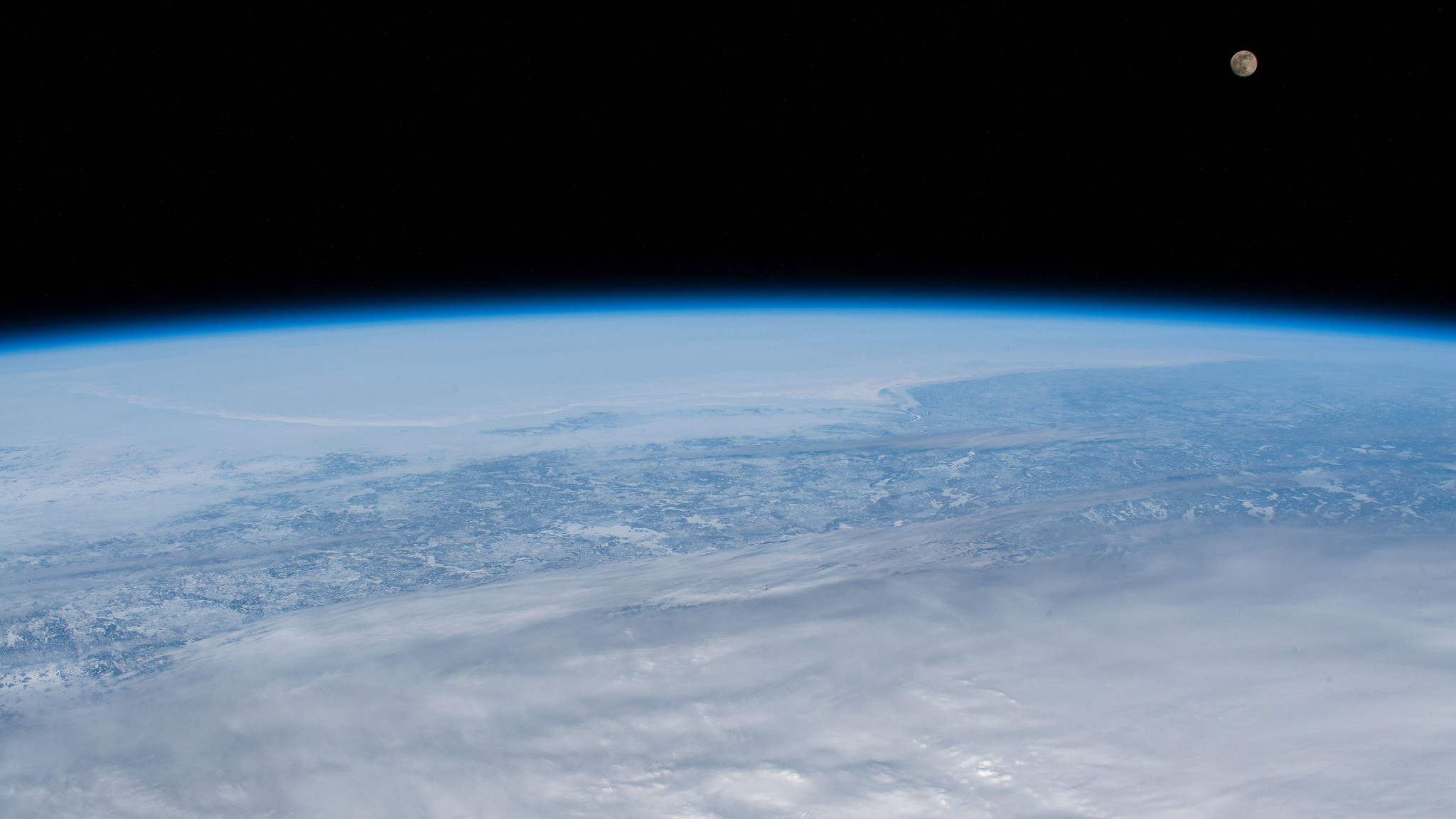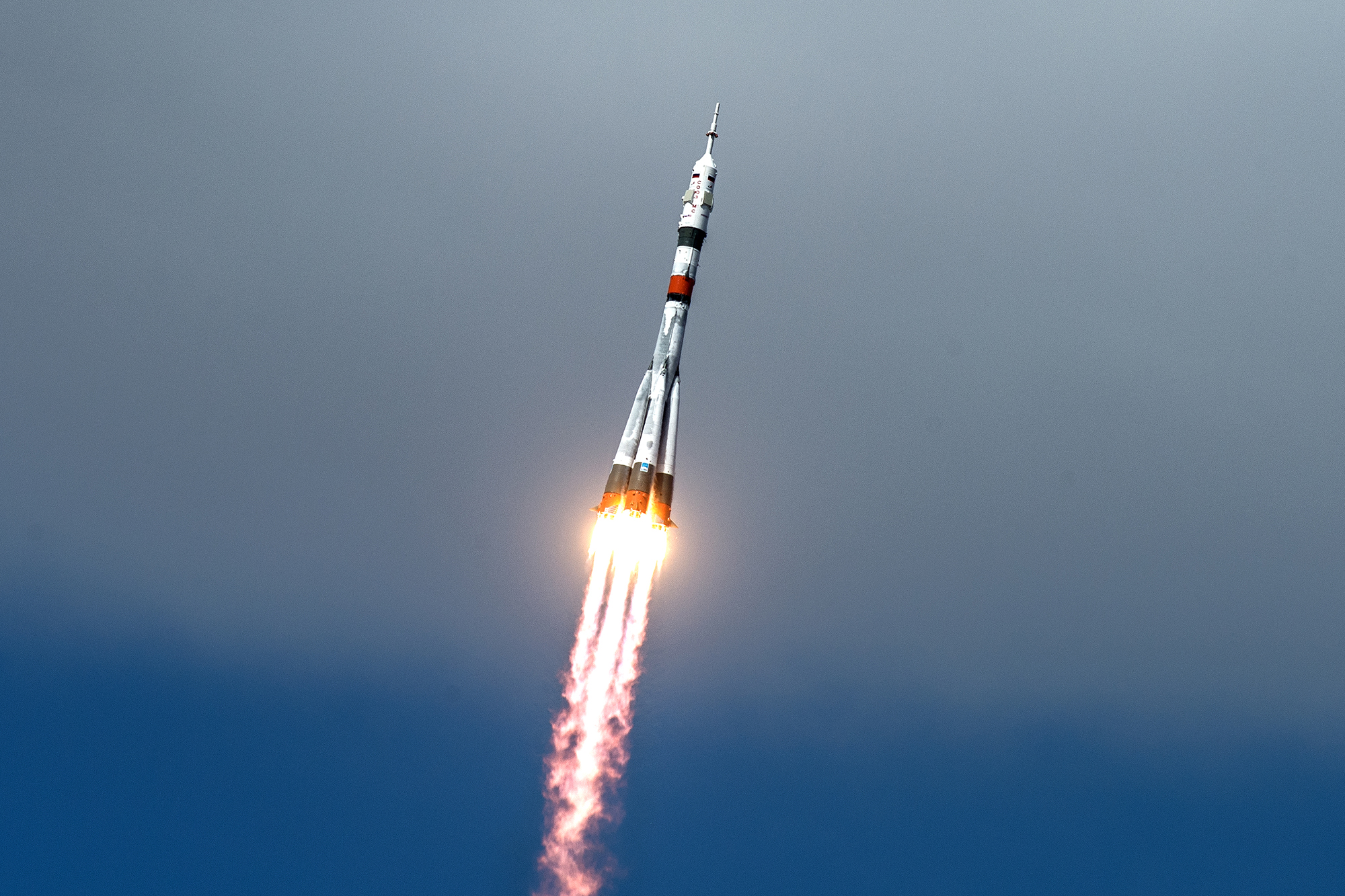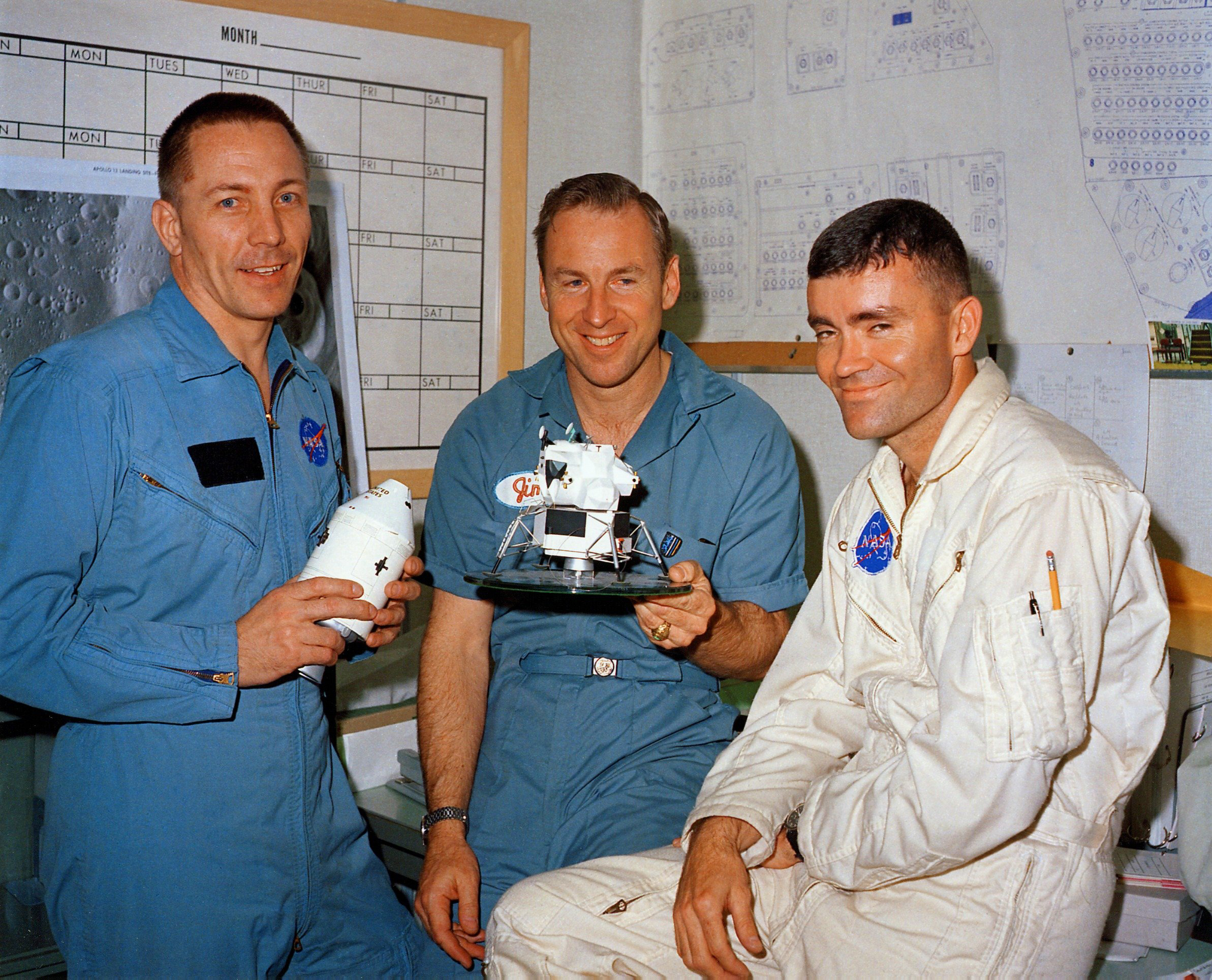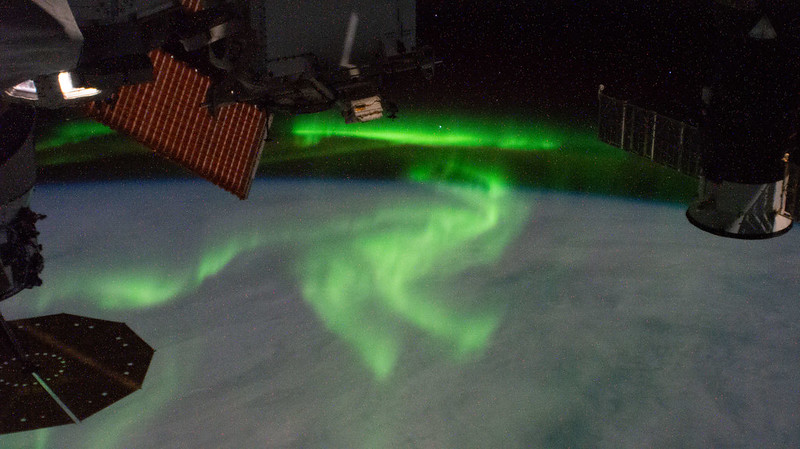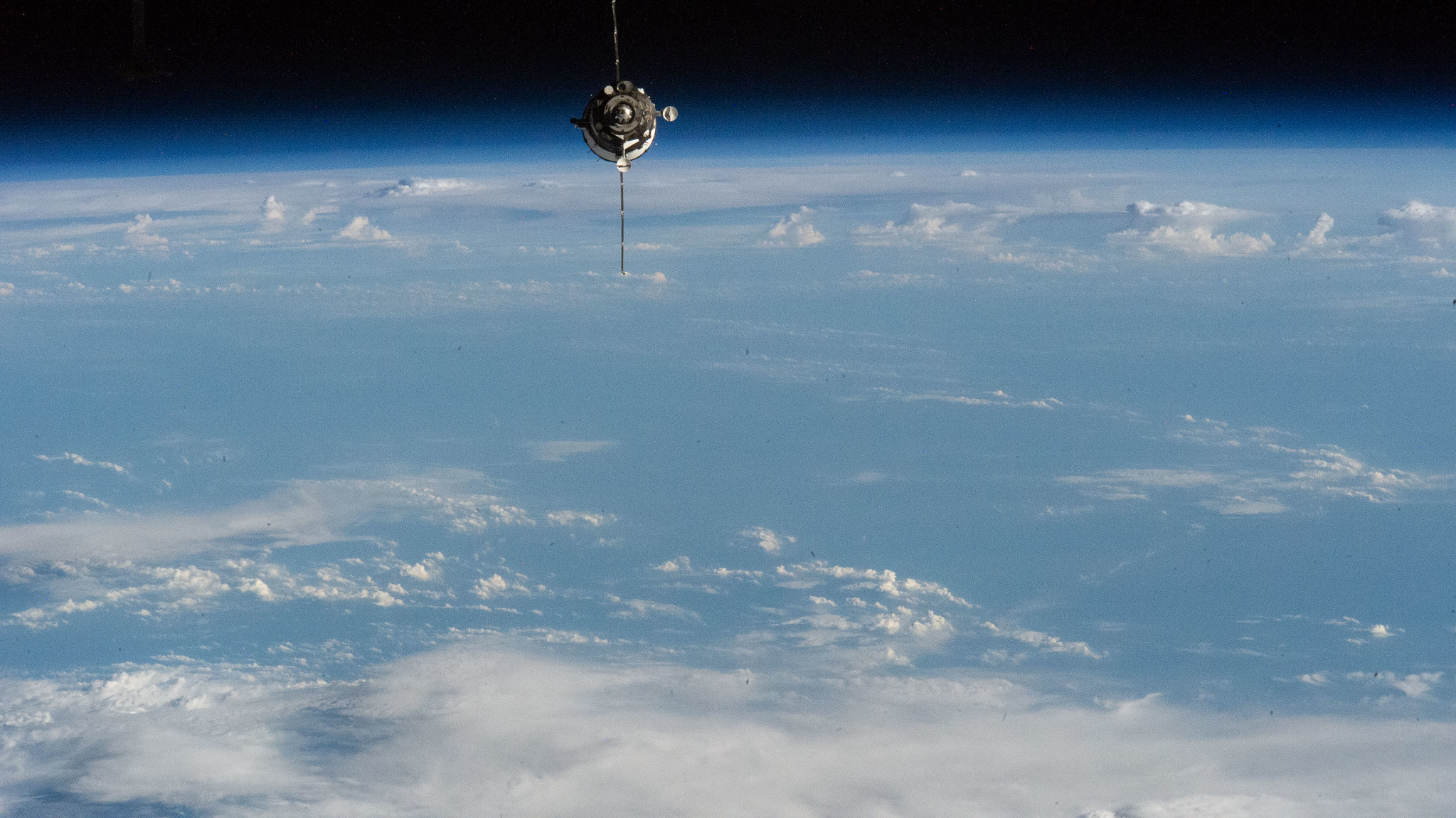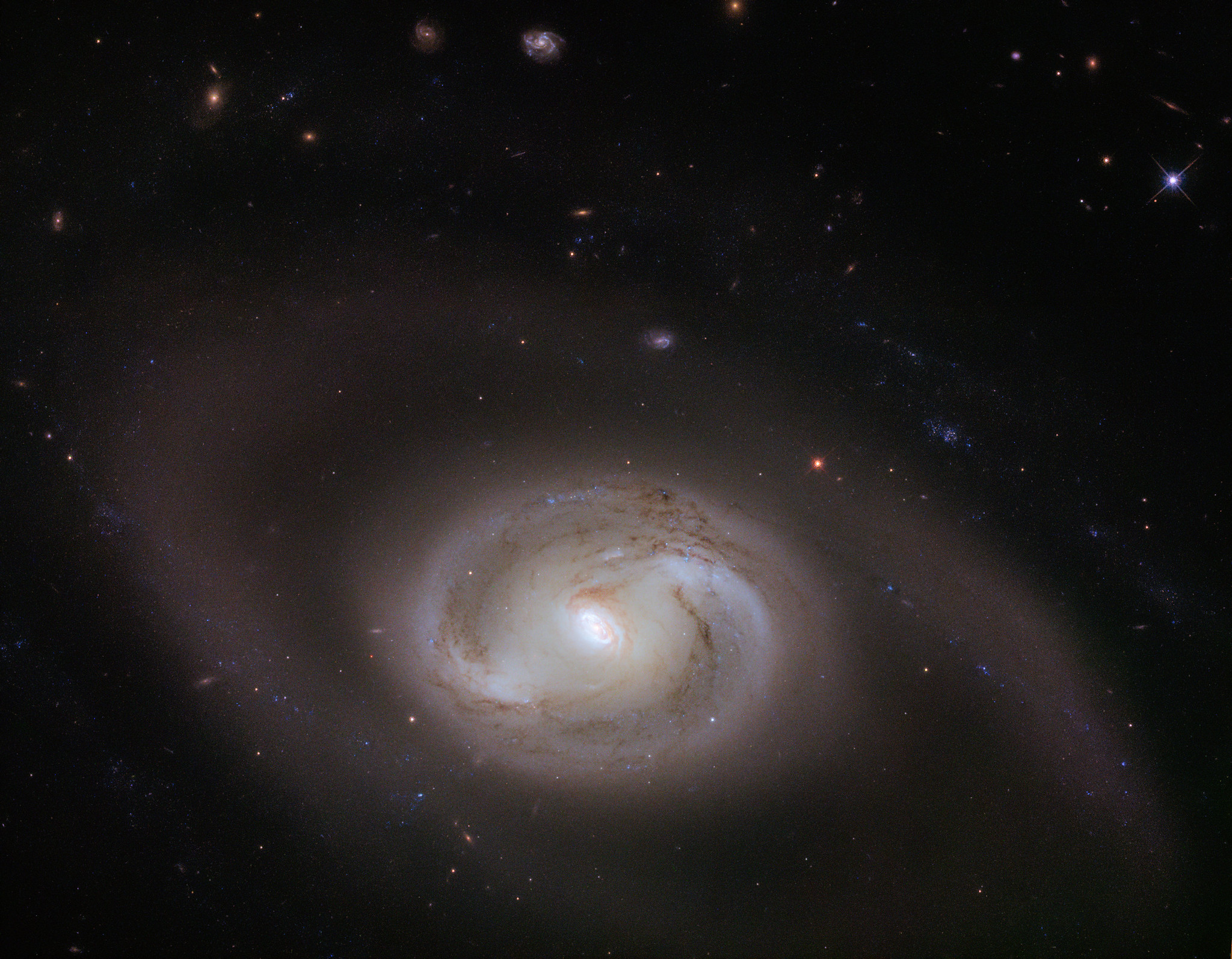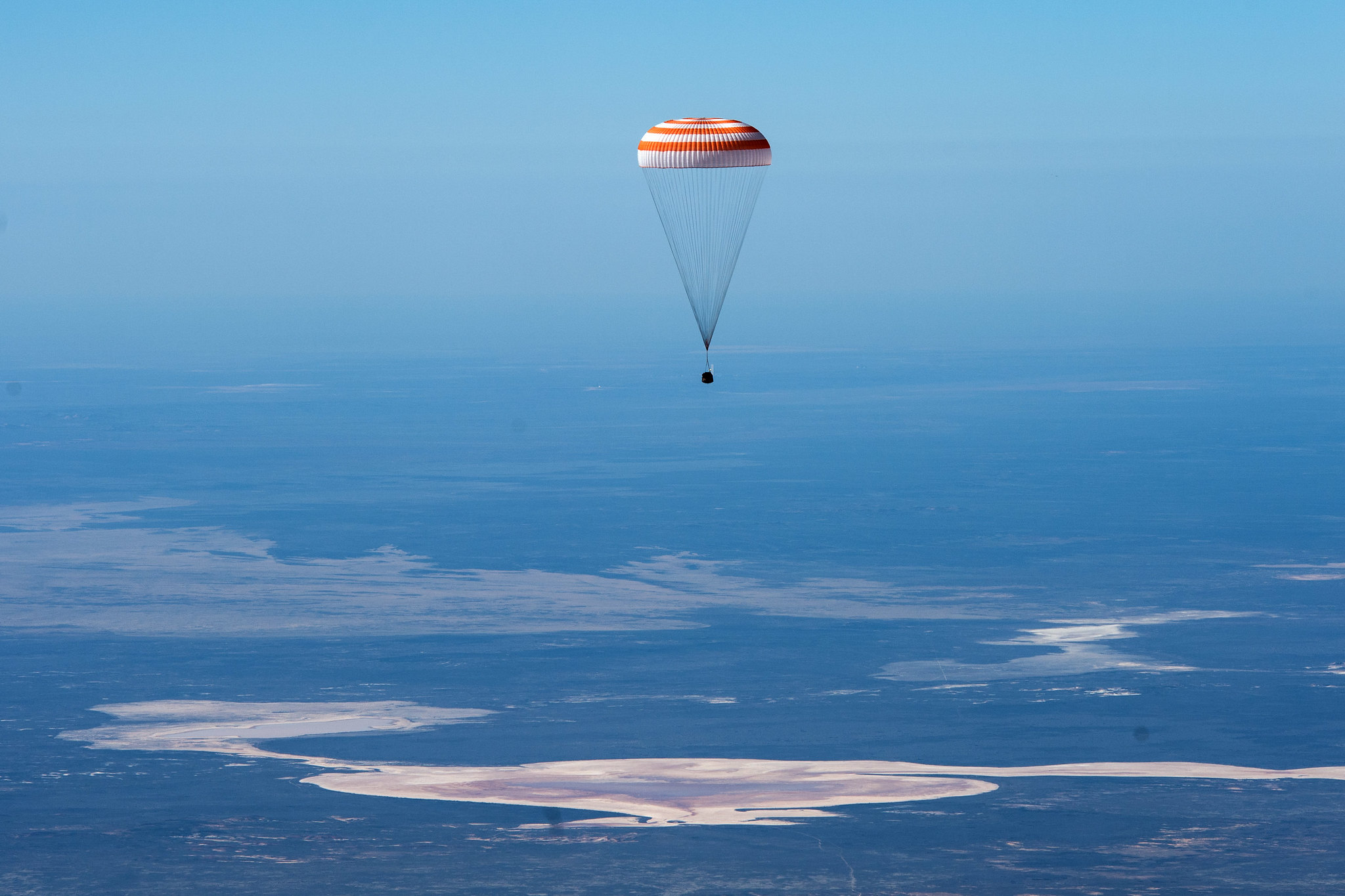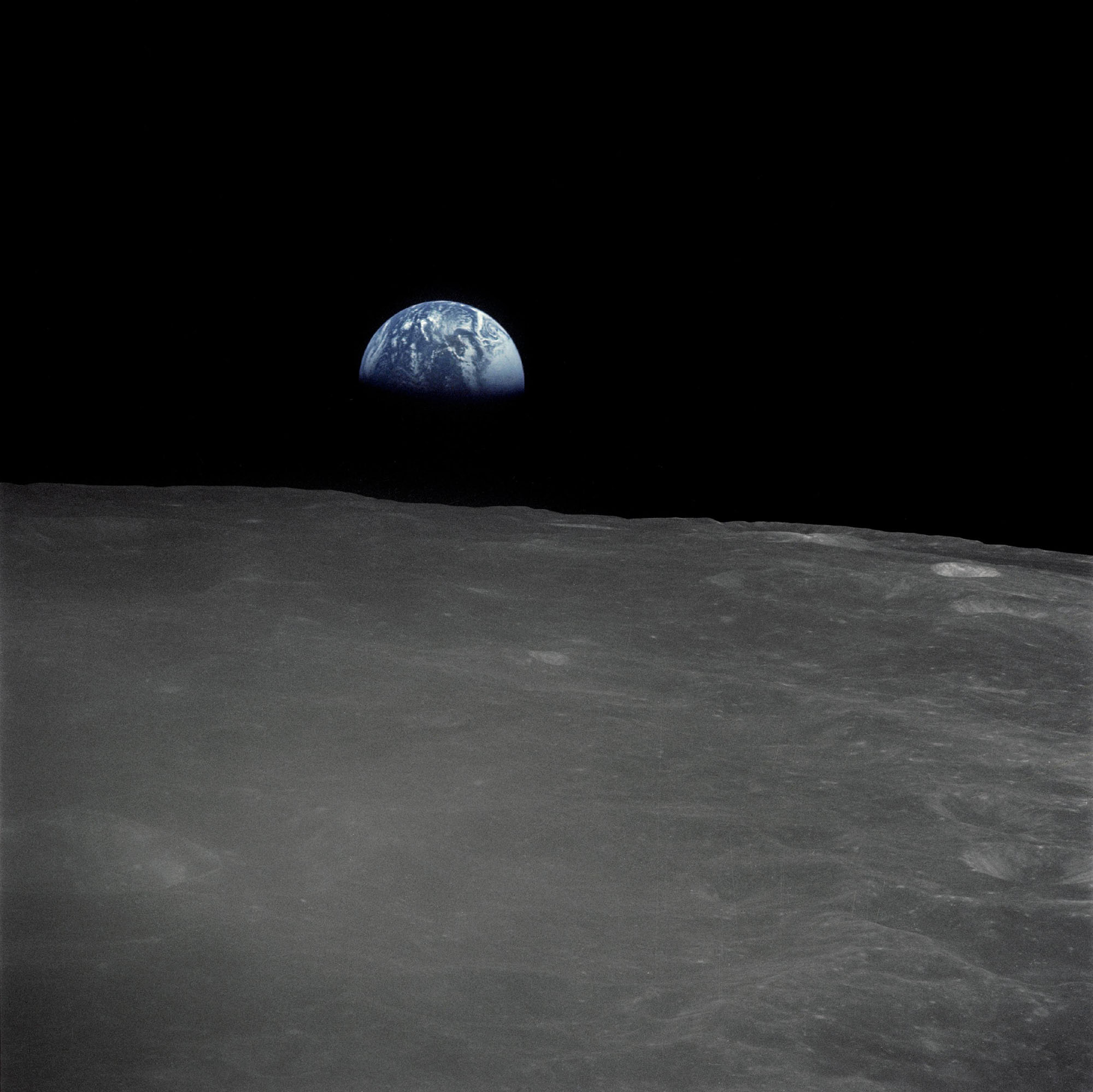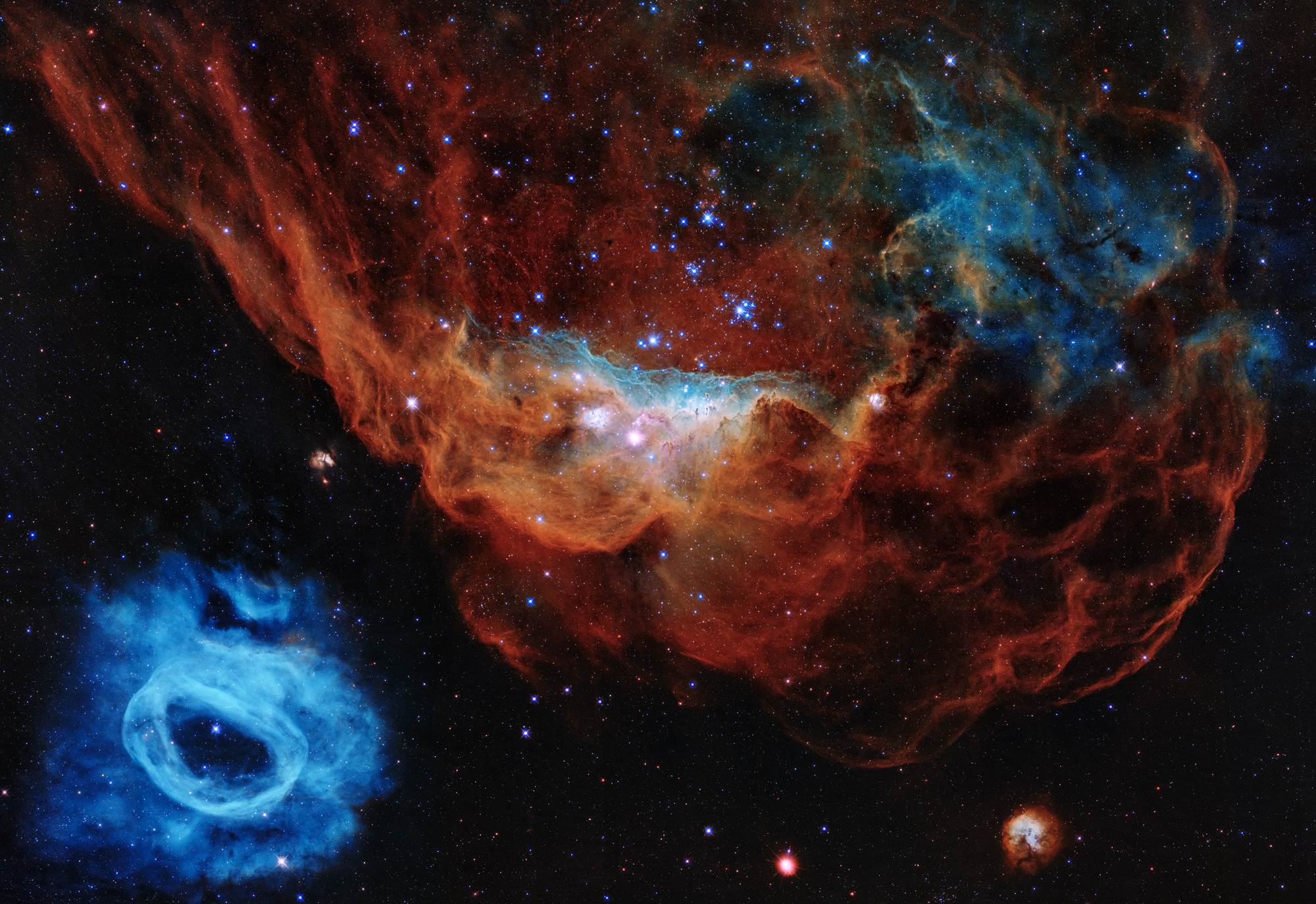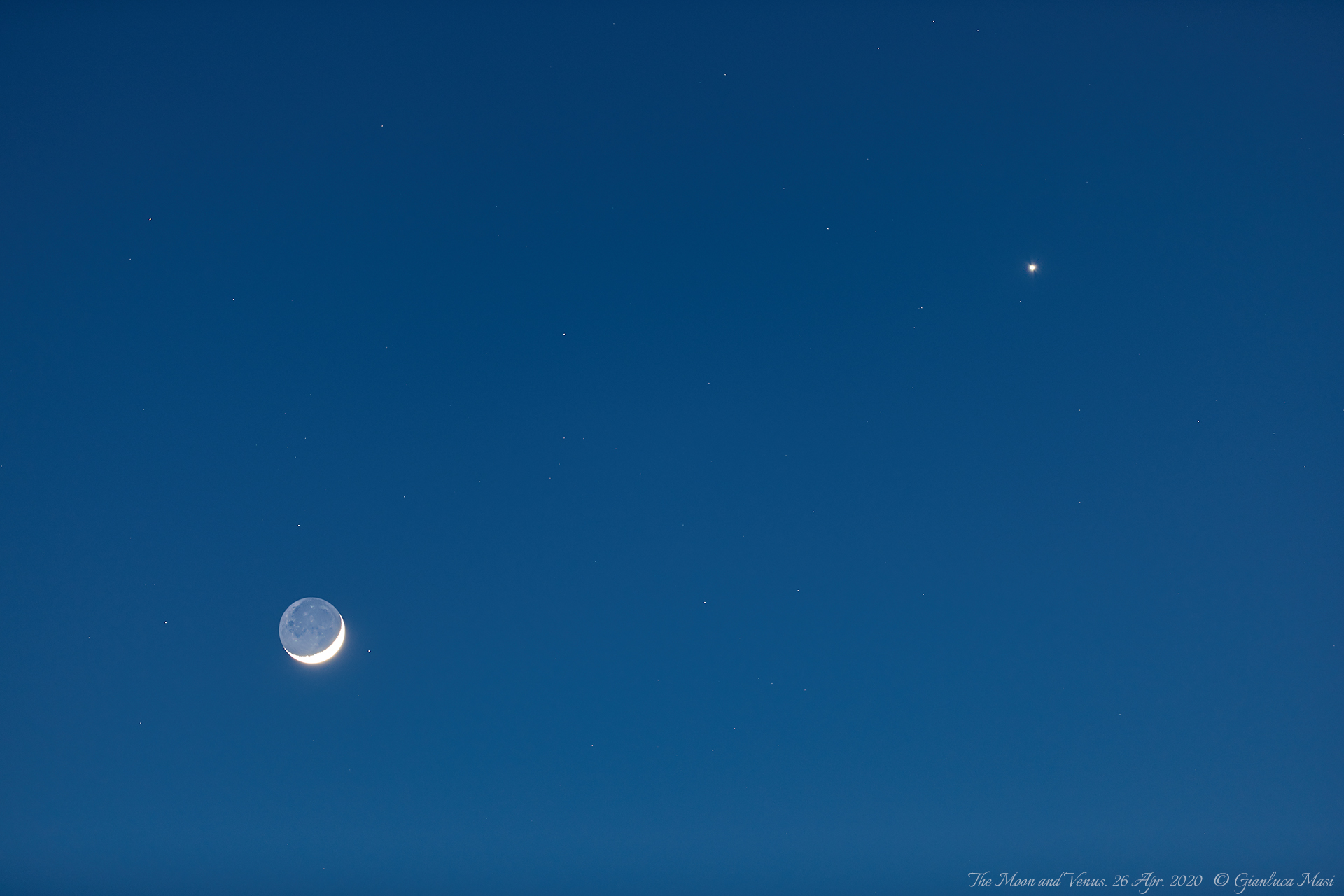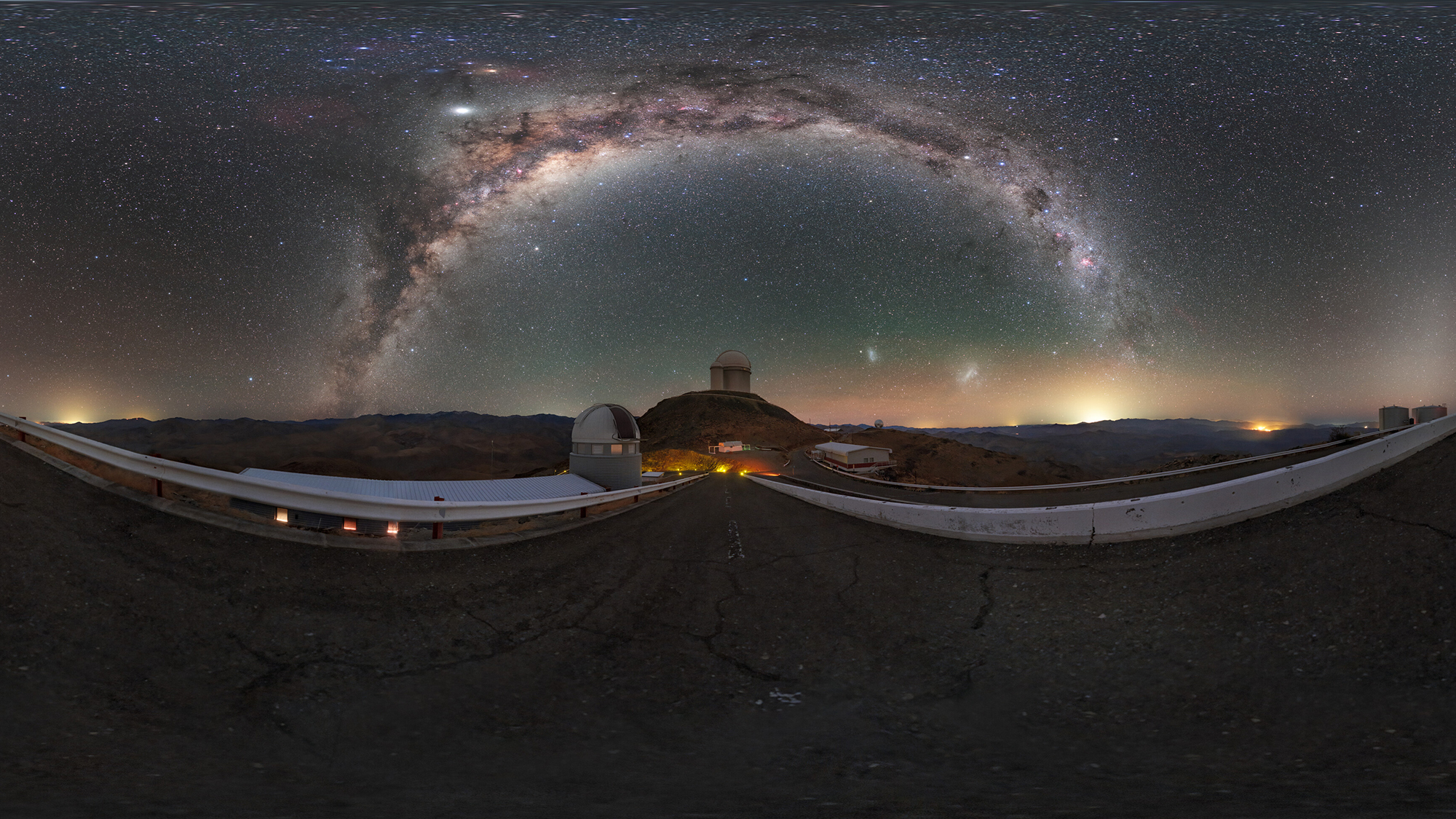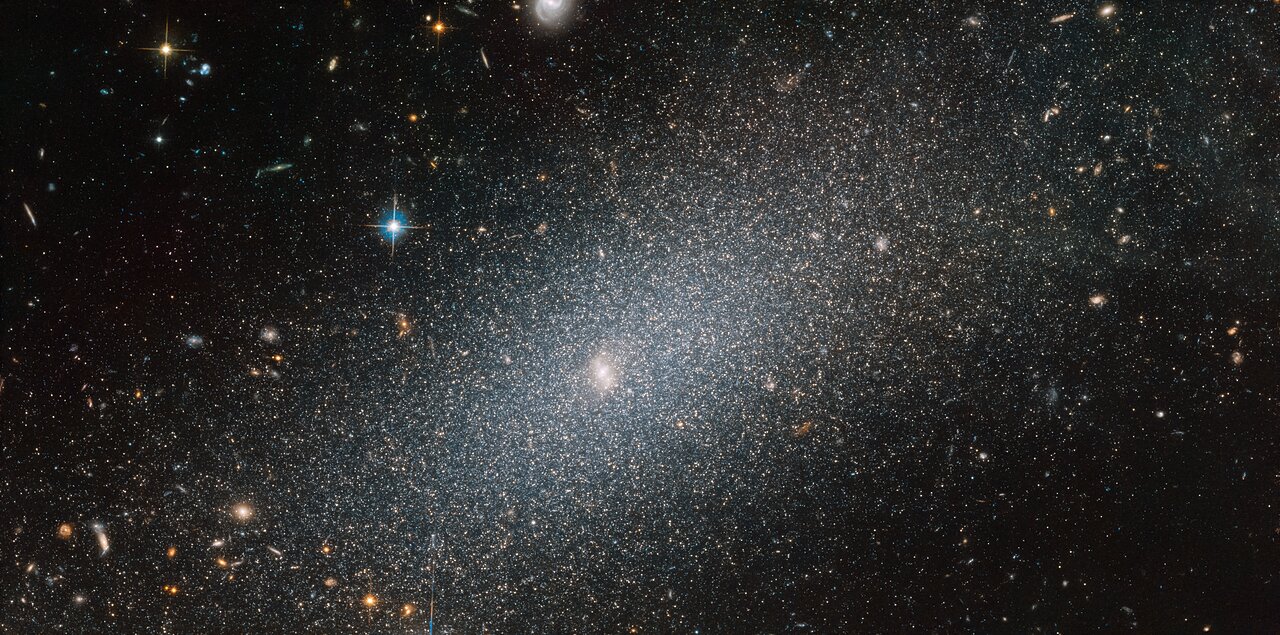Image of the Day 2020 Archive
April 2020
Webb telescope deploys its mirrors
Wednesday, April 1, 2020: NASA's James Webb Space Telescope has successfully deployed its giant primary mirror, putting the new observatory one big step closer to being ready for launch in 2021. The entire 256-inch (6.5 meters) primary mirror assembly unfurled into the same configuration that it would be after deploying in space. This critical test took place in early March, right before NASA's centers shut down due to the coronavirus pandemic. Work on the Webb telescope was temporarily halted on March 20. It is scheduled to launch in March 2021, though even before the coronavirus pandemic, that date was expected to slip. — Hanneke Weitering
Venus meets the Pleiades
Thursday, April 2, 2020: The bright planet Venus begins its trek past the Pleiades star cluster, also known as the "Seven Sisters," in this photo taken by astrophysicist Gianluca Masi of the Virtual Telescope Project in Italy on Wednesday (April 1). Venus, which reaches its greatest brightness of the year at the end of the month, will make a close approach to the Pleiades tomorrow (April 3), when the two objects will be in conjunction — meaning they share the same celestial longitude — for the first time in 8 years. During the conjunction, Venus will be just one-quarter of a degree southeast of Alcyone, the brightest star in the cluster. Look for the pair in the western evening sky. You can also watch a live stream of the encounter from the Virtual Telescope Project here, starting at 1:30 p.m. EDT (1730 GMT). — Hanneke Weitering
Hubble eyes a one-arm spiral galaxy
Friday, April 3, 2020: A new Hubble Space Telescope image reveals the peculiar structure of a spiral galaxy with only one starry arm rotating about its center. While most barred spiral galaxies are characterized by a distinct bar-shaped structure of stars centered on a galactic core, this barred spiral isn't like most others. Located 21 million light-years from Earth in the constellation Canes Venatici, this strange galaxy, known as NGC 4618, was first thought to be a star cluster when the astronomer William Herschel discovered it in 1787. Astronomers now think that gravitational interactions with a neighboring galaxy may have influenced this galaxy's shape. — Hanneke Weitering
Two Saturnian moons
Monday, April 6, 2020: Saturn's moons Rhea and Janus tango on opposite sides of the planet's famous ring system in this new color-enhanced image from NASA's Cassini orbiter. Rhea, Saturn's second-largest moon, is visible in the foreground, while the smaller moon Janus is pictured in the distance across the rings. Citizen scientist Kevin Gill recently processed this 10-year-old view of Saturn and two of its moons using calibrated red, green and blue filtered images captured by the Cassini spacecraft on March 28, 2010. — Hanneke Weitering
Juno spots hazy clouds on Jupiter
Tuesday, April 7, 2020: Hazy clouds streak across Jupiter's northern hemisphere in this new image from NASA's Juno spacecraft. These long, thin cloud bands consist of haze particles that drift above the planet's underlying cloud features. While the cause of these wispy clouds is still a bit of a mystery, scientists believe the hazy features could be related to Jupiter's jet streams. "Two jet streams in Jupiter's atmosphere flank either side of the region where the narrow bands of haze typically appear, and some researchers speculate those jet streams may influence the formation of the high hazes," NASA officials said in a statement. T
he Juno orbiter captured this image during its 25th close flyby of Jupiter, also known as a perijove, on Feb. 17 at 12:29 p.m. EST (1729 GMT), when the spacecraft was about 15,610 miles (25,120 kilometers) from the planet's cloud tops. — Hanneke Weitering
"Pink Moon" seen from space
Wednesday, April 8, 2020: The nearly-full Pink Moon rises over a cloud-covered Earth in this photo taken by an astronaut at the International Space Station. This photo was taken on Monday (April 6), one day before the supermoon, or a full moon that coincides with the moon's perigee, the closest point to Earth in its orbit. Because the full moon of April is traditionally called the Pink Moon, last night's supermoon has been referred to as the "Super Pink Moon." — Hanneke Weitering
Breaking space news, the latest updates on rocket launches, skywatching events and more!
Expedition 63 lifts off
Thursday, April 9, 2020: A Russian Soyuz rocket soars toward the International Space Station with three Expedition 63 crewmembers after lifting off from the Baikonur Cosmodrome in Kazakhstan today (April 9) at 4:05 a.m. EDT (0805 GMT or 1:05 p.m. local Kazakh time). The Soyuz MS-16 crew capsule safely arrived at the orbiting laboratory about six hours later, with NASA astronaut Chris Cassidy and Russian cosmonauts Anatoli Ivanishin and Ivan Vagner on board. — Hanneke Weitering
The day before launch
Friday, April 10, 2020: Fifty years ago today, NASA astronauts Jack Swigert, Jim Lovell and Fred Haise posed with a model of the spacecraft they would launch on the next day for the mission dubbed Apollo 13. The flight was plagued with challenges even before launch, and the crew would experience a catastrophic explosion in the mission's service module, but all three returned to Earth safely. — Meghan Bartels
Goodbye, Earth!
Monday, April 13, 2020: On April 10, the European-Japanese spacecraft BepiColombo conducted a flyby of Earth, which slowed the probe's speed enough to turn its trajectory toward the inner solar system. The next day, the spacecraft took its final image of Earth, a delicate bright crescent in the vastness of space. — Meghan Bartels
A shimmering dance
Tuesday, April 14, 2020: An astronaut on the International Space Station captured this image of the aurora australis over the Indian Ocean on April 8, 2020. At the time, the space station was near the southernmost point in its orbit, and preparing for the arrival of three new crewmembers. — Meghan Bartels
Soyuz approaches the space station
Wednesday, April 15, 2020: Earth's fluffy clouds and blue horizon provide a gorgeous backdrop for the Soyuz MS-16 crew spacecraft, seen here approaching the International Space Station with three Expedition 63 crewmembers on board. The Soyuz arrived at the orbiting lab on Thursday (April 9) with NASA astronaut Chris Cassidy and Russian cosmonauts Anatoly Ivanishin and Ivan Vagner. An astronaut at the International Space Station captured this image from approximately 250 miles (400 kilometers) above the Pacific Ocean, near the coast of Peru. — Hanneke Weitering
Hubble eyes a multiring galaxy
Thursday, April 16, 2020: The Hubble Space Telescope has captured this new view of a peculiar spiral galaxy with rings within its winding galactic arms. Known as NGC 2273, this galaxy is officially designated as a barred spiral, meaning that it has a central bar of stars and pinwheeling arms. But this galaxy also has several ring structures within its spiral arms. NGC 2273 hosts one inner ring along with two outer "pseudorings." Astronomers believe these rings were created by spiral arms appearing to wind up tightly into a closed loop. — Hanneke Weitering
Space station crew returns to Earth
Friday, April 17, 2020: The Soyuz MS-15 spacecraft carrying three astronauts back from the International Space Station parachutes down to Earth before landing in Kazakhstan. NASA astronauts Jessica Meir and Drew Morgan and their Russian crewmember Oleg Skripochka of Roscosmos safely touched down today at 1:16:43 a.m. EDT (0516 GMT or 11:16 a.m. local Kazakh time), southeast of the town of Dzhezkazgan. — Hanneke Weitering
Meteor and the Milky Way over La Silla
Monday, April 20, 2020: A "shooting star" streaks through the night sky near the Large and Small Magellanic Clouds, two of Earth's galactic neighbors, in this photo from the La Silla Observatory in Chile. In the foreground of the image are two of the three new ExTrA (Exoplanets in Transits and their Atmospheres) telescopes at the observatory. — Hanneke Weitering
Starlink satellites spotted from space
Tuesday, April 21, 2020: A chain of SpaceX's Starlink internet satellites orbits over Earth's lime-green auroras in this photo captured by an astronaut at the International Space Station. The tiny satellite trails were captured on Monday (April 13) at 5:25 p.m. EDT (2125 GMT), as the station was passing over the southern Indian Ocean at an altitude of about 231 nautical miles (428 kilometers), NASA said in an image description. The satellites pictured here appear to belong to the fifth batch of approximately 60 satellites that SpaceX has launched for its new Starlink constellation, according to Jonathan McDowell, an astronomer at the Harvard-Smithsonian Center for Astrophysics who avidly tracks objects in Earth's orbit. The company plans to launch its seventh batch of satellites on Wednesday (April 22). — Hanneke Weitering
Related: No, they're not aliens — SpaceX's Starlink satellites surprise British skywatchers
Apollo 16's "Earthrise"
Wednesday, April 22, 2020: Happy Earth Day from space! This stunning view of Earth rising above the lunar horizon was captured by NASA's Apollo 16 crew shortly before they landed on the moon 48 years ago. The astronauts snapped this picture, which appears to have been inspired by Apollo 13's famous "Earthrise" photo, on April 20, 1972, the same day the lunar module Orion touched down on the surface with NASA astronauts John Young, Apollo 16 commander, and lunar module pilot Charlie Duke. Command module pilot Ken Mattingly stayed in orbit during their 71-hour stay on on the surface. — Hanneke Weitering
A Lyrid meteor and the Milky Way
Thursday, April 23, 2020: A "shooting star" crosses the Milky Way galaxy in this photo taken during the peak of the annual Lyrid meteor shower. Photographer Tina Pappas Lee captured this view from Fripp Island, South Carolina, on Wednesday (April 22) at approximately 4:45 a.m. local time. Directly below the meteor, two of the brightest planets in the night sky, Jupiter and Saturn, are visible side by side. — Hanneke Weitering
Hubble captures a "cosmic reef"
Friday, April 24, 2020: Happy birthday, Hubble! To celebrate the 30th anniversary of the launch of the Hubble Space Telescope, NASA released this new image of a "cosmic undersea world" that is teeming with stars and colorful clouds of interstellar dust and gas. The image features the giant red nebula NGC 2014 and its smaller blue companion NGC 2020, both located in the Large Magellanic Cloud, a small satellite galaxy of the Milky Way located 163,000 light-years from Earth. Hubble scientists have nicknamed the image the "Cosmic Reef," because the large nebula "resembles part of a coral reef floating in a vast sea of stars," Hubble officials said in a statement. — Hanneke Weitering
Venus meets the crescent moon
Monday, April 27, 2020: The bright "evening star" Venus shines near the crescent moon in this photo captured by astrophysicist Gianluca Masi of the Virtual Telescope Project in Rome. Venus and the moon made a close approach in the evening sky yesterday (April 26), and the planet will reach its greatest brightness of the year tomorrow (April 28). — Hanneke Weitering
Milky Way sparkles over La Silla
Tuesday, April 28, 2020: The arc of the Milky Way galaxy shimmers over the La Silla Observatory in Chile in this gorgeous night-sky view by European Southern Observatory (ESO) photo ambassador Petr Horálek. In the center of the image is the ESO 3.6-metre telescope, and to its left is the Swiss 1.2-metre Leonhard Euler telescope. Visible beneath the righthand limb of the Milky Way's starry arc are the Large and Small Magellanic Clouds, two satellite galaxies of the Milky Way. Saturn is visible under the left side of the arc, with Jupiter glowing brightly just above it and slightly to the left. You can see more in a 360-degree panoramic version of this image here. — Hanneke Weitering
Dwarf galaxy "steals the show" in Hubble image
Wednesday, April 29, 2020: In a deep-space image featuring countless distant galaxies of all shapes and sizes, a tiny dwarf galaxy takes center stage. The small elliptical galaxy in the foreground of this new Hubble Space Telescope image is known as PGC 29388. It contains between 100 million to a few billion stars, which pales in comparison to our Milky Way galaxy, which has 250 to 400 billion stars. "As beautiful as the surrounding space may be, the sparkling galaxy in the foreground of this image from the NASA/ESA Hubble Space Telescope undeniably steals the show," Hubble scientists said in a statement. The image was released on April 20, a few days before the telescope celebrated its 30th anniversary. — Hanneke Weitering
"Spiders" spotted on Mars
Thursday, April 30, 2020: Strange, spider-like features creep on the surface of Mars in this image taken by the High-Resolution Imaging Science Experiment (HiRISE) camera on board NASA's Mars Reconnaissance Orbiter. These spidery landforms are what scientists call "araneiform" terrain, which literally translates to "spider-like." The features arise because the Red Planet's climate is so cold that during the Martian winter, carbon dioxide freezes from the atmosphere and accumulates as ice on the surface. When that ice begins to thaw in the spring, that carbon dioxide sublimates back into the atmosphere, or turns from a solid to a gas, leaving behind deep troughs in the terrain as gas is trapped below the surface. — Hanneke Weitering
Can't find the date you're looking for? It may have been a weekend or holiday, when we don't normally update our Image of the Day.
Click 'NEXT PAGE' below for May >

Space.com is the premier source of space exploration, innovation and astronomy news, chronicling (and celebrating) humanity's ongoing expansion across the final frontier. Originally founded in 1999, Space.com is, and always has been, the passion of writers and editors who are space fans and also trained journalists. Our current news team consists of Editor-in-Chief Tariq Malik; Editor Hanneke Weitering, Senior Space Writer Mike Wall; Senior Writer Meghan Bartels; Senior Writer Chelsea Gohd, Senior Writer Tereza Pultarova and Staff Writer Alexander Cox, focusing on e-commerce. Senior Producer Steve Spaleta oversees our space videos, with Diana Whitcroft as our Social Media Editor.
